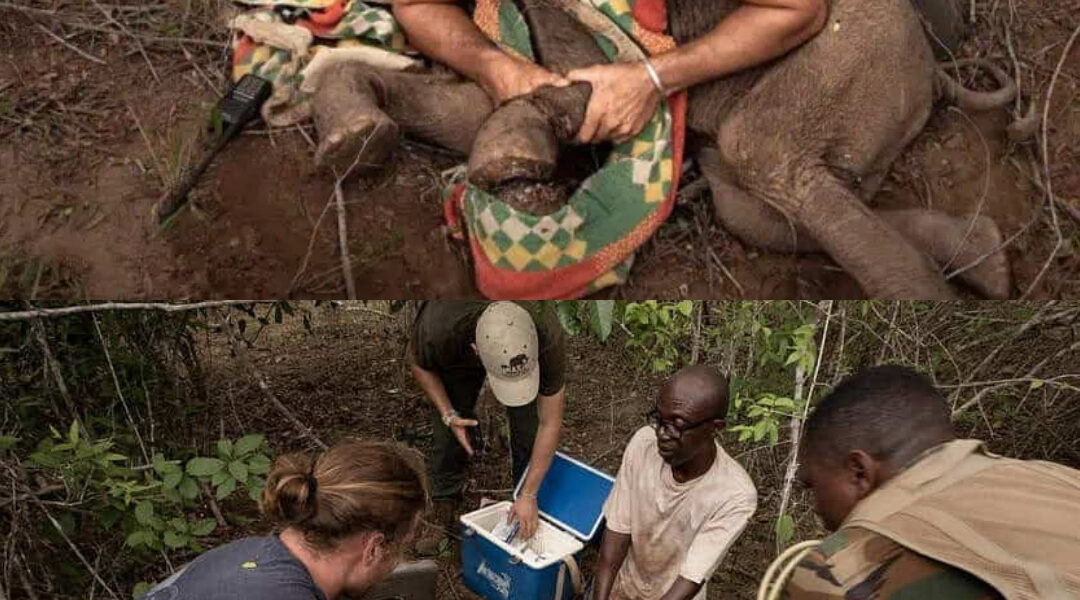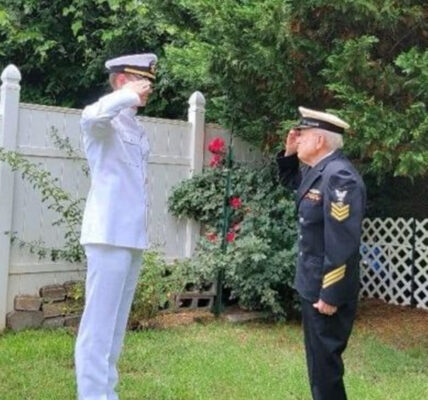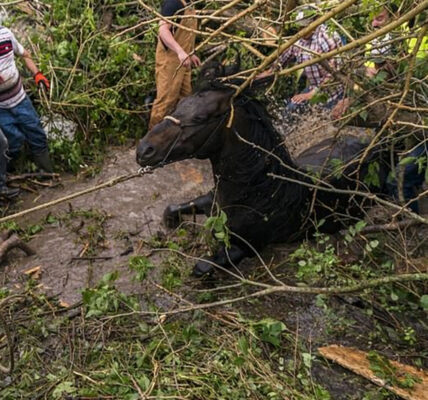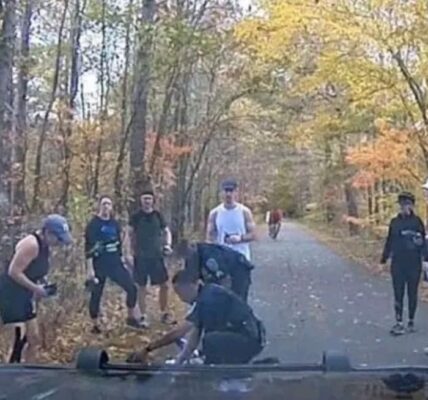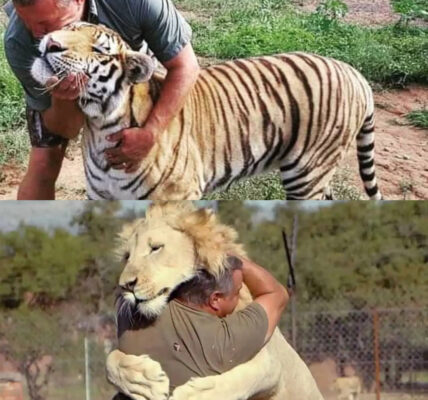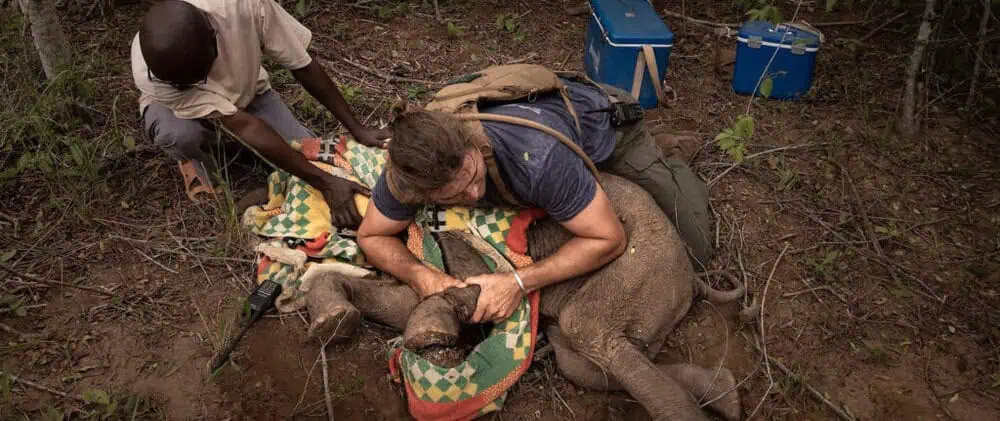
The distress call came in just after sunrise — a young elephant had been found limping through the thick brush of the Shimba Hills, dragging a heavy coil of wire that cut deep into its leg. Somewhere nearby, its mother hovered, helpless but protective, unwilling to leave her suffering calf.
For the rangers who patrol this vast Kenyan wilderness, it was a sight they’d seen too many times — another victim of a poacher’s snare. These traps, meant for bushmeat, are crude and merciless: loops of wire that tighten with every step, biting deeper into flesh until the animal can no longer walk. Left untreated, they mean certain death.
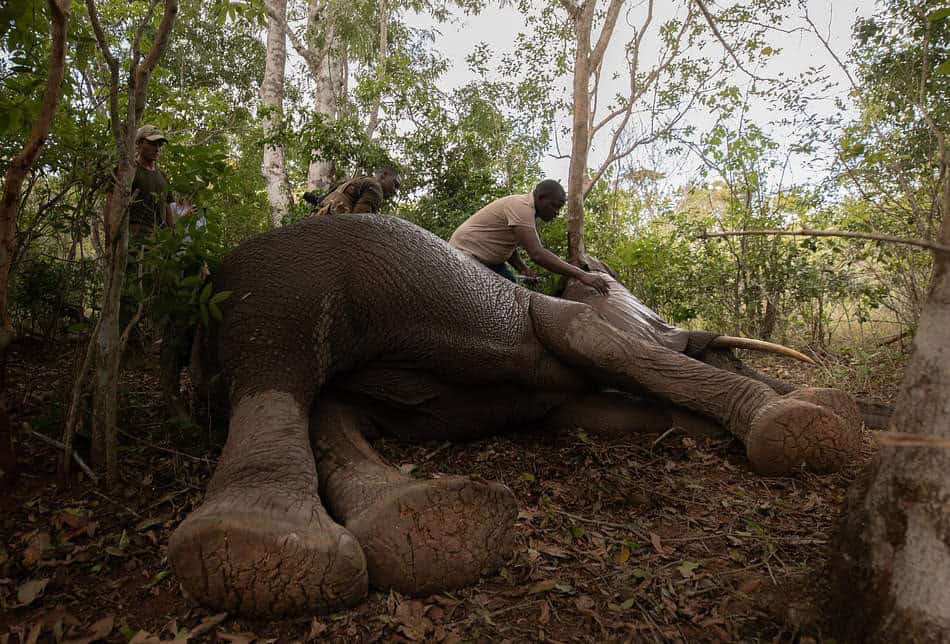
But on April 5th, 2022, this story would end differently.
The Sheldrick Wildlife Trust and Kenya Wildlife Service’s Tsavo Mobile Veterinary Unit responded immediately. A helicopter was dispatched to carry veterinarian Dr. Poghon to the remote terrain. Every minute mattered; infection was already setting in, and the baby’s pain was worsening by the hour.
When the team arrived, the first challenge was the mother.
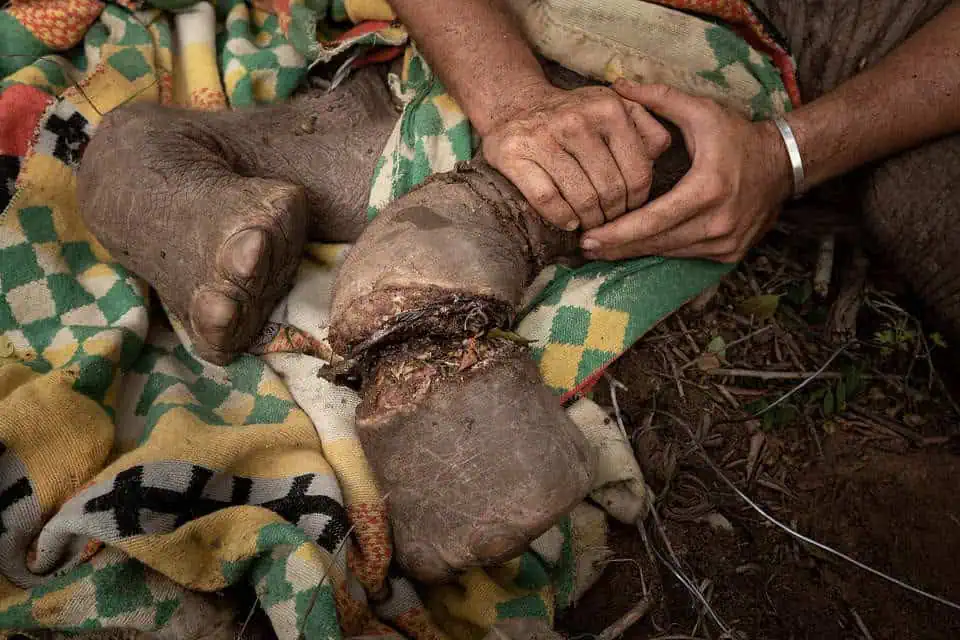
She refused to leave her calf’s side — anxious, defensive, ready to fight to protect her baby. From above, the pilot guided her gently into a nearby clearing, where Dr. Poghon administered a tranquilizer dart.
As the mother sank slowly to the ground, the rescue team rushed in. They moved with practiced precision — keeping her airway clear, cooling her body with water to prevent overheating, and positioning her so she could breathe freely.
Even asleep, her trunk twitched protectively toward the sound of her calf.
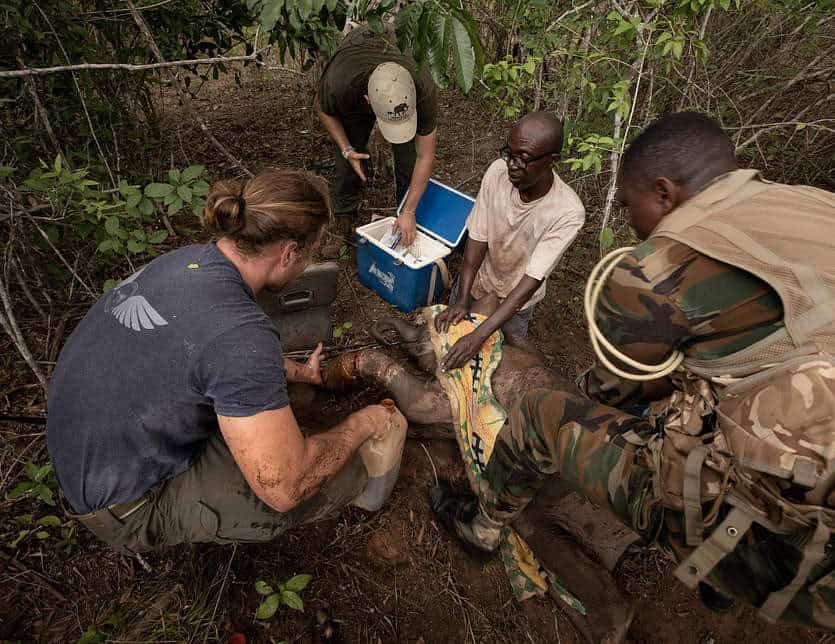
Meanwhile, the helicopter circled back to find the baby, which had wandered off into the thick vegetation. The terrain was steep, tangled with vines, and visibility was low. But then the pilot spotted movement — a small gray shape struggling uphill, dragging the cruel loop of wire still fastened around its front ankle.
The team descended quickly. The snare was buried deep, the wire thick and unyielding. Working carefully, they cut through it inch by inch, freeing the swollen leg at last. The wound was severe — raw tissue exposed, the skin hot with infection — but the team wasted no time.
They flushed the injury, applied antibiotics and anti-inflammatories, and coated the area with green clay to draw out infection and promote healing.
And then came the hardest part — getting the baby back to its mother.
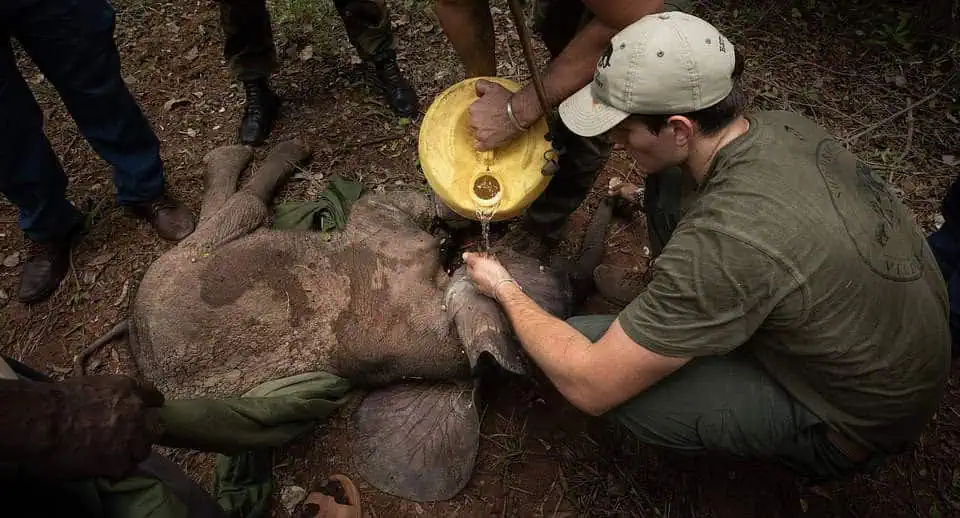
For nearly half a kilometer, the team carried the calf uphill through thick brush, their boots sinking into mud, the air heavy and humid. The baby trumpeted softly, confused and frightened, but they didn’t stop until they reached the clearing where the mother lay resting. They gently placed the calf beside her, brushing its trunk against hers before retreating.
Minutes later, the sedative began to wear off. The mother stirred, her great frame shifting as her eyes fluttered open. When she realized her baby was beside her, she let out a low, trembling rumble — part relief, part love, part promise.
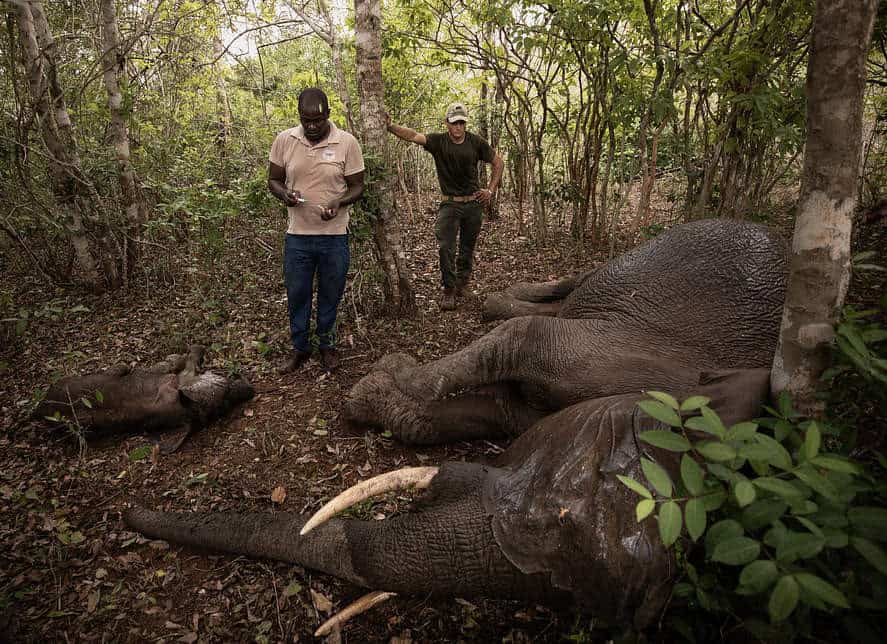
The team stood at a distance, watching quietly as the pair leaned into each other. Then, with slow, steady steps, the mother rose to her feet. Her calf followed, still limping but free. Together, they disappeared into the green of the forest — two silhouettes fading into the mist.
In the days that followed, rangers monitored the pair from afar. Despite the depth of her wound, the young elephant’s healing was remarkable. Her spirit — unbroken. Her bond with her mother — unshaken.
Dr. Poghon later reflected, “Every rescue reminds us what’s at stake. These are lives — families — fighting to survive in a world that’s shrinking around them.”
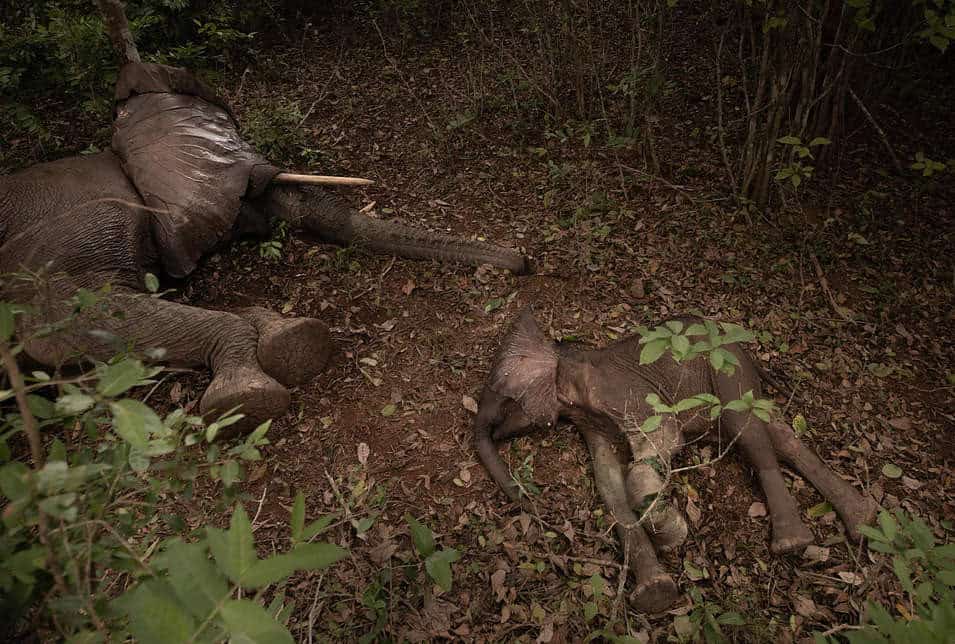
It’s estimated that tens of thousands of animals die each year in snares across Africa. But not this one. Not that day.
That morning in the Shimba Hills, courage, compassion, and timing aligned just right — and a little elephant named Hope (as rescuers later called her) got another chance to live wild and free, where she belongs.
Because sometimes, saving one life really does change everything.
